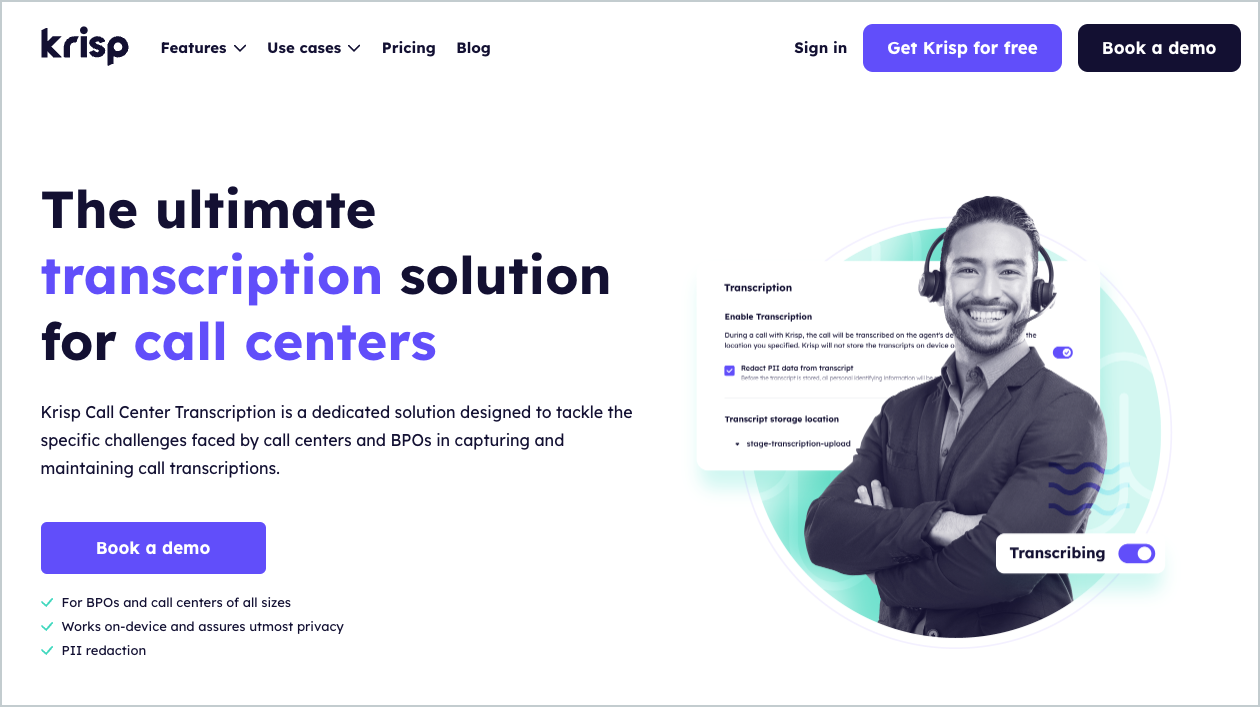How can businesses stay ahead of the competition when efficiency and accessibility are more critical than ever? The answer lies in leveraging innovative technologies like Speech-to-Text APIs to accelerate how businesses handle communication and data processing.
By converting spoken words into accurate text, Speech-to-Text APIs facilitate faster information capture, automate tasks, and enhance accessibility for all users, including those with disabilities.
Let’s dive deeper into the article to see why your business must use Speech-to-Text APIs in 2024.
What is Speech-to-Text Technology?
Speech-to-Text (STT) technology is an advanced system that converts spoken language into written text through the use of algorithms, machine learning, and natural language processing. It works by analyzing audio input, identifying the spoken words, and transcribing them into text in real-time.
This technology is widely used in applications such as voice assistants, automated transcription services, and communication tools, making it easier for users to interact with digital systems through speech. STT technology is essential for enhancing accessibility, improving efficiency, and enabling seamless communication in a variety of professional and personal contexts.
Key Benefits of Speech-to-Text APIs
Speech-to-Text technology has evolved significantly from its early days of basic, error-prone systems to the highly accurate and accessible tools we use today.
Initially, speech recognition systems struggled to understand natural language, often requiring slow, clear speech and producing frequent errors. However, advancements in artificial intelligence (AI) and machine learning (ML) have transformed these systems.
Modern Speech-to-Text technology leverages deep learning algorithms and vast datasets to help it accurately understand diverse accents, jargon, and contextual nuances. The speech-to-text API evolution has reached the level where it can bring huge value to your enterprise by:
- Enhancing productivity
Speech-to-Text APIs realize faster and more efficient data entry, transcription, and documentation. In the meantime, they eliminate the need for manual transcription so that professionals can focus on higher-value tasks.
Whether dictating notes, creating documents, or capturing meeting minutes, Speech-to-Text tools streamline workflows and save valuable time.
- Improving accessibility
Speech-to-text APIs convert spoken language into text, making digital content accessible to individuals with disabilities and those who prefer reading over listening. In educational settings, they support students by providing written transcripts of lectures and discussions, making it easier for them to review material at their own pace.
- Supporting multilingual communication
Speech-to-Text APIs facilitate global communication by accurately transcribing speech in multiple languages, bridging language barriers in international business. This capability is particularly valuable in international customer service, where businesses need to interact with clients from diverse linguistic backgrounds.
- Facilitating real-time analytics
These APIs allow for the instant transcription and analysis of spoken communication, providing real-time insights and enabling quick decision-making. By integrating Speech-to-Text APIs with analytics tools, you can gain insights into customer sentiment, track key trends, and identify areas for improvement.
- Enhancing Customer Experience
In customer service, Speech-to-Text APIs improve response times and personalize interactions by providing accurate and immediate transcriptions of customer inquiries. Customer call transcriptions can be analyzed to tailor responses, address concerns more effectively, and provide a higher level of service.
- Prioritizing cost-efficiency
Automating transcription and data entry reduces the need for manual labor, lowering operational costs and improving overall efficiency.
- Ensuring Compliance and Documentation
Accurate transcriptions ensure that businesses maintain thorough documentation, crucial for compliance in industries such as finance, healthcare, and legal services. Speech-to-Text technology ensures that every spoken word is accurately recorded, providing a reliable audit trail.
- Integration with Other Technologies
Speech-to-Text APIs can be integrated with AI, machine learning, and automation tools, creating more intelligent and responsive systems.
How Krisp Leverages Speech-to-Text Technology to Enhance Communication

Krisp significantly improves the effectiveness of Speech-to-Text by ensuring the audio input is clear and free from background noise.The accuracy of Speech-to-Text technology relies heavily on the quality of the audio it processes. In noisy environments—like busy offices, cafes, or during remote meetings—background sounds can interfere with speech recognition, leading to errors in transcription.
The Krisp’s Speech-to-Text paired with its advanced noise-cancellation technology eliminates these unwanted sounds, allowing the Speech-to-Text API to focus solely on the speaker’s voice. This mix not only enhances communication efficiency but also ensures that important information is captured without being distorted by ambient noise.
By providing clean audio input for Speech-to-Text APIs, Krisp helps businesses deliver better customer experiences, improve team collaboration, and maintain high communication standards across various platforms and industries.
In Sum
Speech-to-Text APIs are essential for 2024 as they enhance productivity, accessibility, and customer service across industries. These APIs convert spoken language into accurate text in real-time, streamlining communication and automating tasks like transcription and data entry.
As technology advances, Speech-to-Text APIs have become more accurate and versatile, supporting multilingual communication and integrating with AI and automation tools. This makes them indispensable for businesses aiming to improve efficiency, maintain regulatory compliance, and provide superior customer experiences. In an increasingly digital world, leveraging Speech-to-Text APIs is crucial for staying competitive and meeting the demands of modern communication.
Frequently Asked Questions

